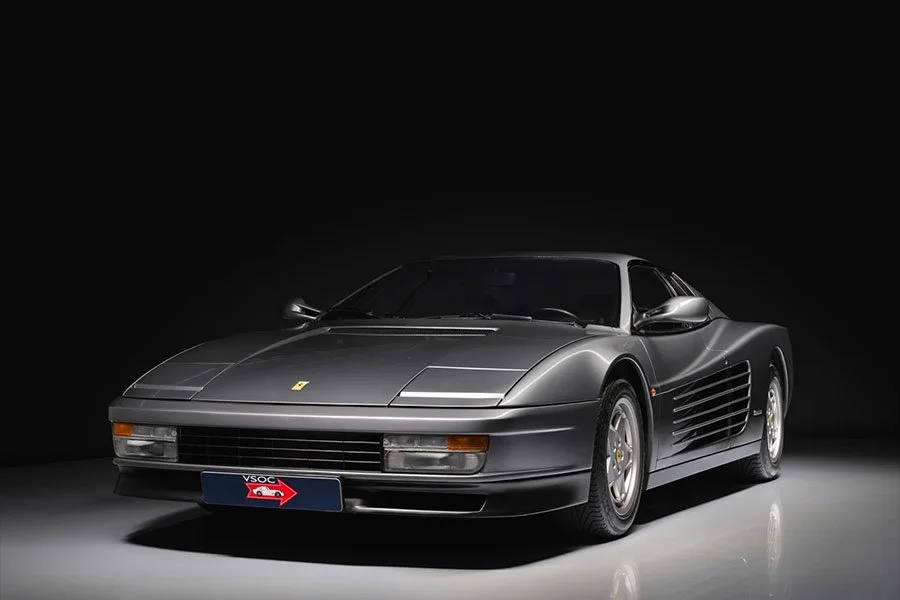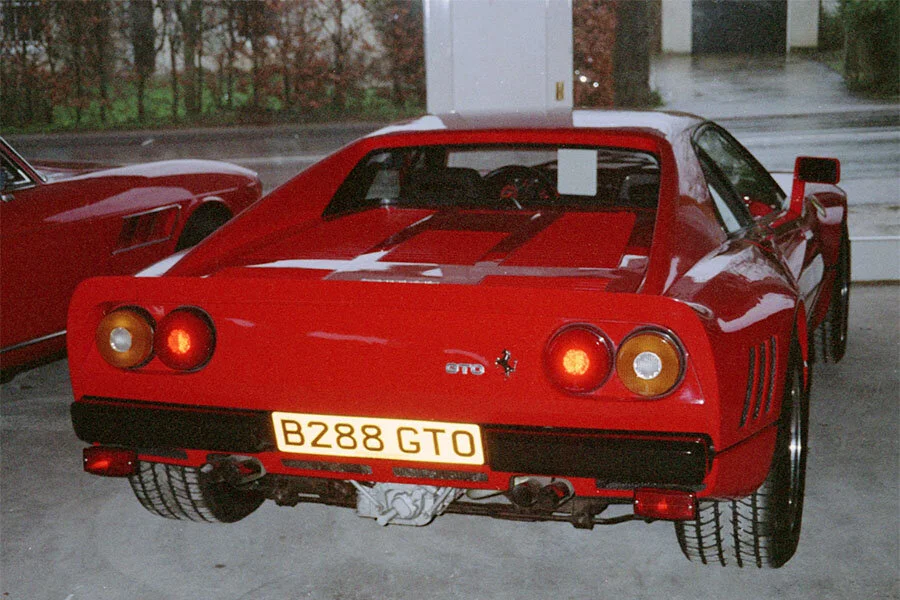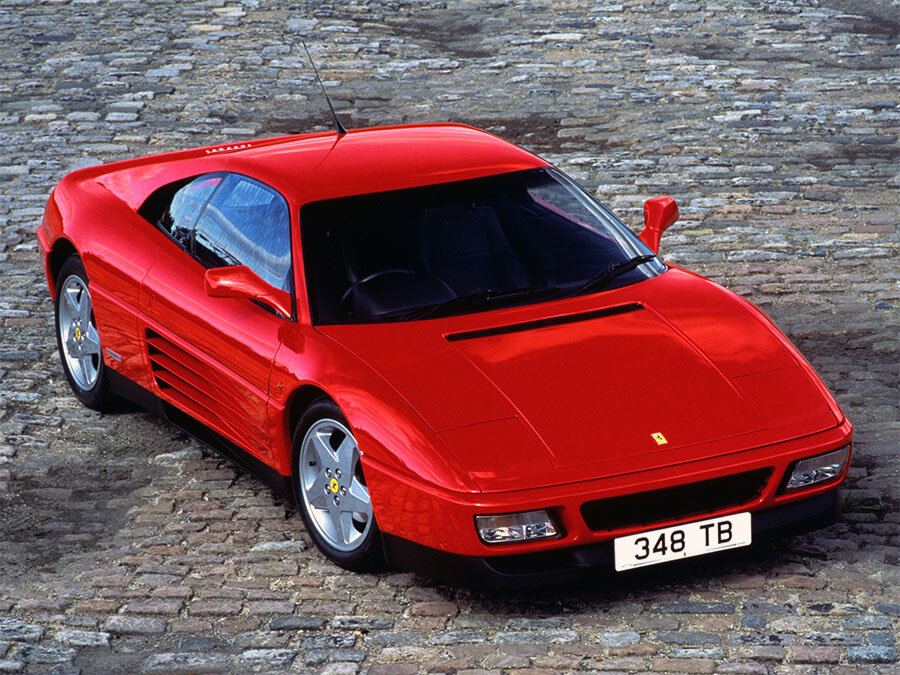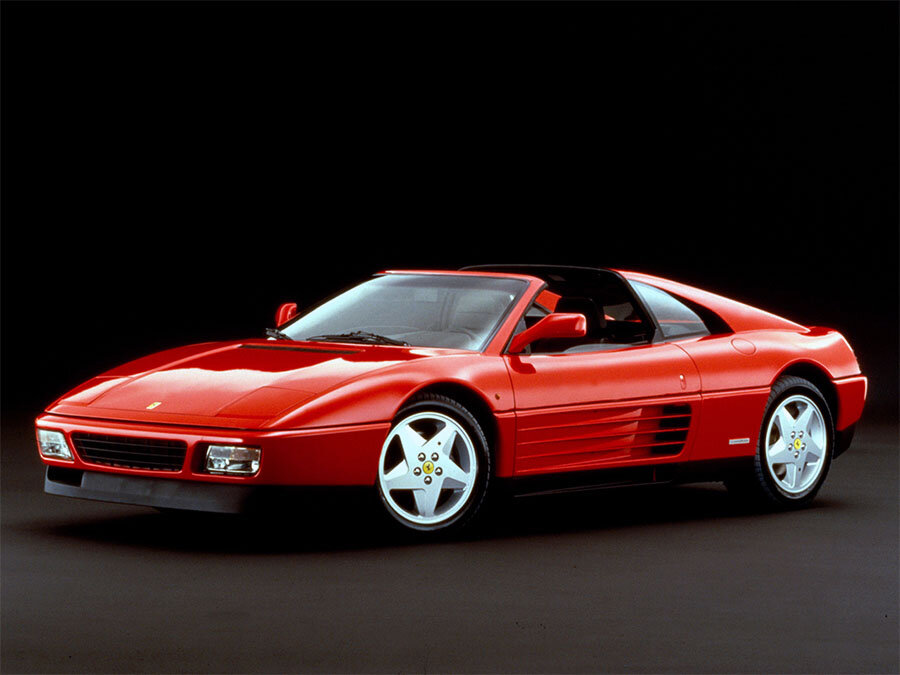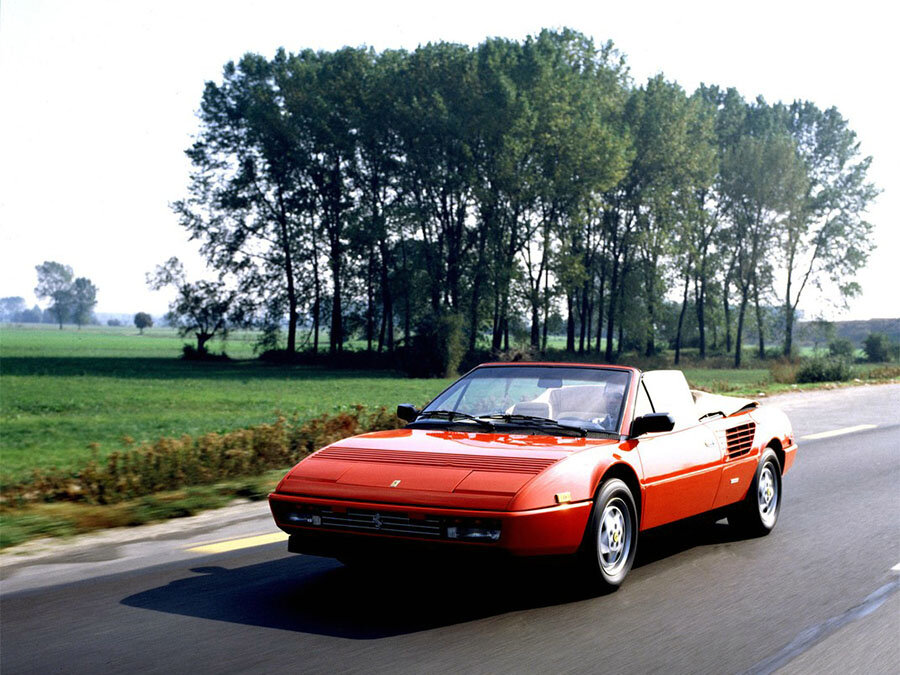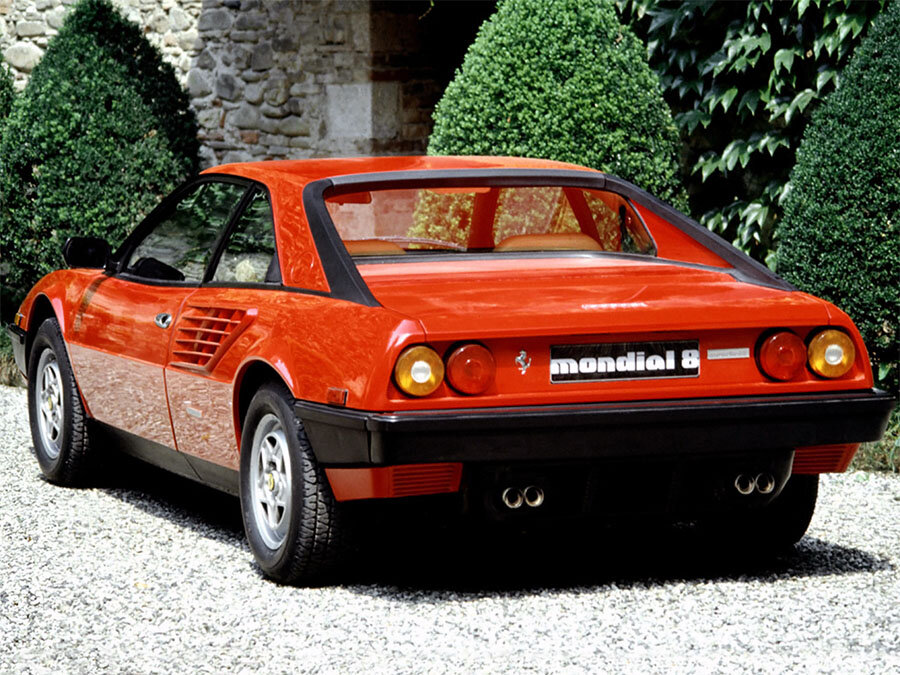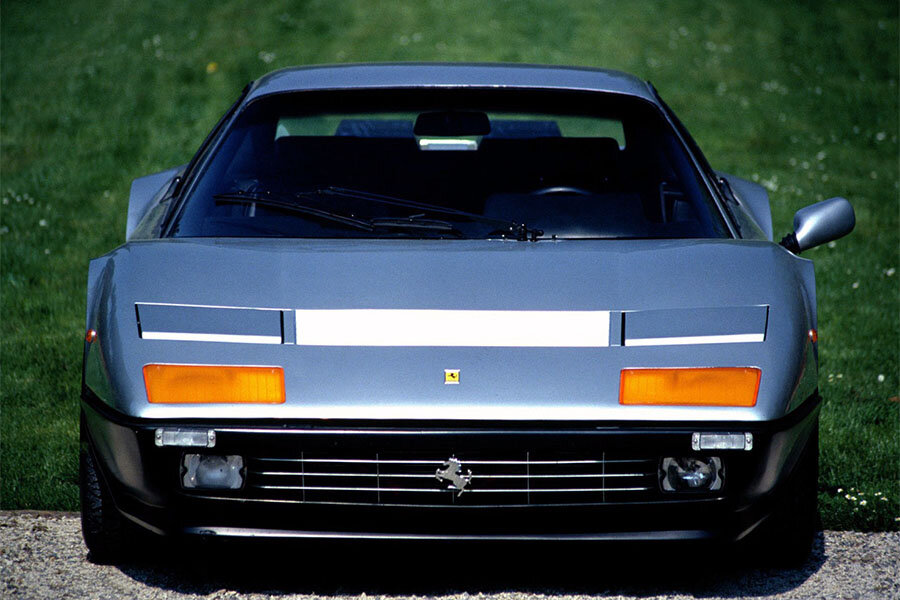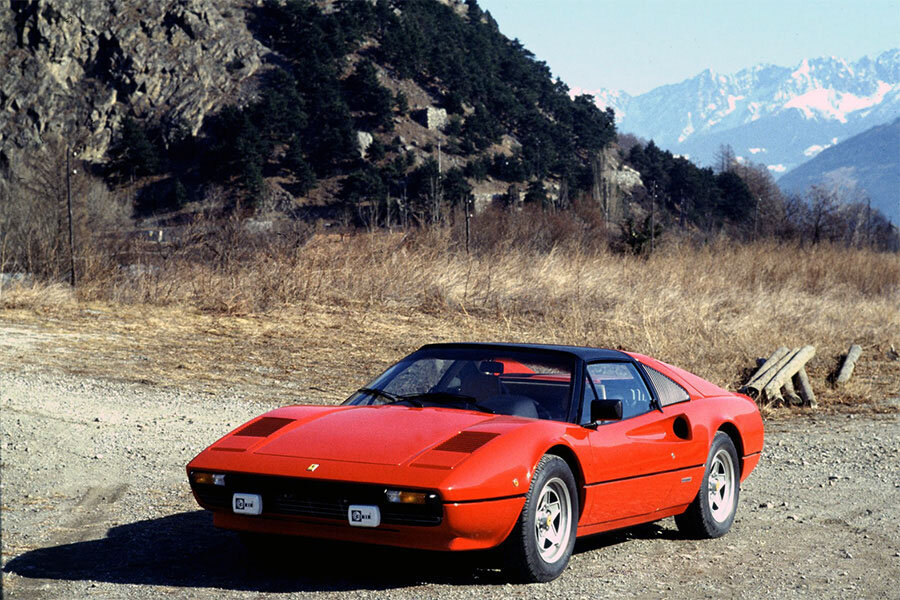Inside, significant changes were made as the cockpit was given a major facelift.
New equipment included a re-shaped instrument binnacle and vertical control panel that linked the dash and centre console.
Large gauges for road and engine speed were split by smaller read outs for water temperature and oil pressure stacked one above the other. More small read outs for fuel and oil temperature were located in each corner.
Two separate groups of modern new switches were located on the centre console and transmission tunnel.
The front and rear seats were completely redesigned. Those in the back now folded down to provide an additional luggage platform. To accommodate this feature, the rear armrest seen on earlier Mondials was deleted.
Elsewhere, redesigned grab panels on the doors now housed the electric window switches (which were moved from the centre console).
The Mondial had always been equipped to a very high specification and this latest example was no different. Standard equipment included leather upholstery, air-conditioning, tinted glass, electric windows and electric mirrors. Audio equipment was normally installed by the supplying dealer.
OPTIONS
A small number of optional extras were available. They included metallic paint, Schedoni luggage and leather upholstery for the dash and headliner.
Additionally, Coupe buyers could specify an electric sunroof while those ordering the Cabriolet could choose a leather instead of canvas tonneau to cover the hood when lowered.
WEIGHT / PERFORMANCE
Ferrari quoted a weight of 1426kg for the Coupe and 1468kg for the Cabriolet (up 16kg and 68kg respectively).
Top speed went from 155mph to 158mph while the 0-62mph time dropped from 6.5 to 6.3 seconds.
USA VERSION
Although Ferrari were edging ever closer to producing a true world market car, there were still some differences between US-spec. examples and those bound for most other markets.
The Tipo F119 G engine used for the US variant featured a special exhaust system with twin silencers and separate catalytic converters for each bank of cylinders. Peak power was 5bhp lower at 295bhp.
USA specification derivatives were easily identifiable on account of their large rectangular side lights attached to each fender.
PRODUCTION CHANGES
Few modifications were made after the Mondial t was launched at Geneva in March 1989.
In 1990, the engine management system was upgraded to Bosch M2.7 and catalytic converters were added to all cars. Peak power dropped to 295bhp as a result.
Towards the end of production, a Valeo manually-operated clutch-less gearbox was added to the options list. This innovative system used an electronic clutch that was actuated as soon as the gear lever was moved. It worked extremely well, but was dropped in favour of the F1-style paddle-shift arrangement adopted on the F355 from 1997.
Less than ten Valeo-equipped cars are understood to have been built.
END OF PRODUCTION
Ferrari stopped building the Mondial t in late 1993.
By this time, 840 Coupes had been completed (45 in right-hand drive). There were also 1017 Cabriolets (51 of which were right-hand drive).
The Mondial was not replaced as Ferrari decided to abandon the mid-engined 2+2 concept.
In total, over 6000 Mondials had been built since the model arrived in 1980.
Ferrari did eventually revisit the idea of a junior 2+2 with the front-engined California of 2008.
Text copyright: Supercar Nostalgia
Photo copyright: Ferrari - https://www.ferrari.com





























